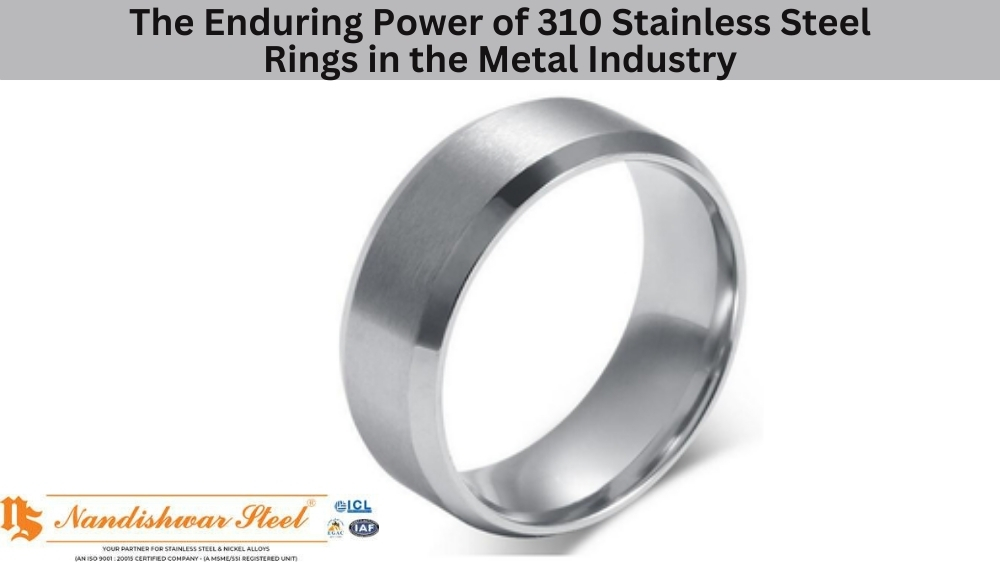In the domain of metallurgy, stainless steel is revered for its lustre, strength, and resistance to corrosion. Among the numerous grades and formulations, the 310 stainless steel ring is a paragon of durability and performance — particularly in demanding industrial environments where temperature and corrosion resistance are paramount.
What is 310 Stainless Steel?
Stainless steel, an iron-based alloy, is synonymous with remarkable resistance against rust and staining due to its chromium content. The 310 grade is a high-chromium and nickel austenitic stainless steel that withstands high temperatures and offers excellent oxidation resistance.
This resilience against heat and corrosion renders 310 stainless steel ideal for a myriad of industrial applications. This material can endure where others might falter, from furnace parts and heat exchangers to kiln liners and burner nozzles. Its ring fabrication brings this resilience into structures that demand exceptional circular strength.
Superior Heat Tolerance
Three hundred ten stainless steel rings boast an impressive capacity to operate efficiently at temperatures up to 2100°F (1149°C). This tolerance is the metal of choice for equipment intended for high-temperature services. When other metals would succumb to the warping and degradation accompanying such heat, 310 stands steadfast, ensuring integrity even in the blistering throes of industrial operations.
Resistance to Corrosion
Corrosion can be the bane of metals exposed to harsh environments. Yet, 310 rings provide an answer to such challenging scenarios. Their high chromium and nickel content creates a formidable layer, protecting the core metal from oxidative elements that initiate corrosion. In settings fraught with aggressive chemicals or where frequent cleaning can predispose lesser metals to corrosion, 310 steel remains imperious.
Diverse Industrial Uses of 310 Stainless Steel Rings
The versatility of 310 stainless steel rings makes them invaluable across varied sectors. Their endurance against heat and corrosion suits them for the petrochemical and chemical processing industries. But their applications continue; they’re also found in power plants, ore processing plants, and factories producing food and pharmaceuticals. In these diverse locales, the rings are flanges, sealing components, and connective elements in complex machinery.
The Lifespan of 310 Rings
Investments in industrial components prioritize longevity, and 310 rings do not disappoint. Their lifecycle extends far beyond what many alternatives offer, justifying the initial investment through reduced maintenance and replacement costs. This prolonged lifespan contributes to economic savings and environmental sustainability by diminishing waste and the need for frequent resource extraction.
Conclusion: A Ring of Reliability
The 310 stainless steel ring represents a fusion of science and practicality. Its presence in the metal industry signifies a commitment to quality and endurance. For any narrators of industry, the tales of efficiency in using 310 rings are ones of triumph against the adversities of high temperatures and corrosive forces.
For those in the metal industry, recognizing the significant attributes of this grade means understanding a key contributor to operational excellence. As we continue to celebrate the strengths of various metal alloys, the 310 stainless steel ring stands out as a testament to human ingenuity and the relentless pursuit of industrial advancement.
Are you looking to incorporate 310 stainless steel rings into your operations? Please share your experiences or inquire about their potential applications. The world of metallurgy is an open book, and we invite you to contribute to the continuing story of this remarkable material.



